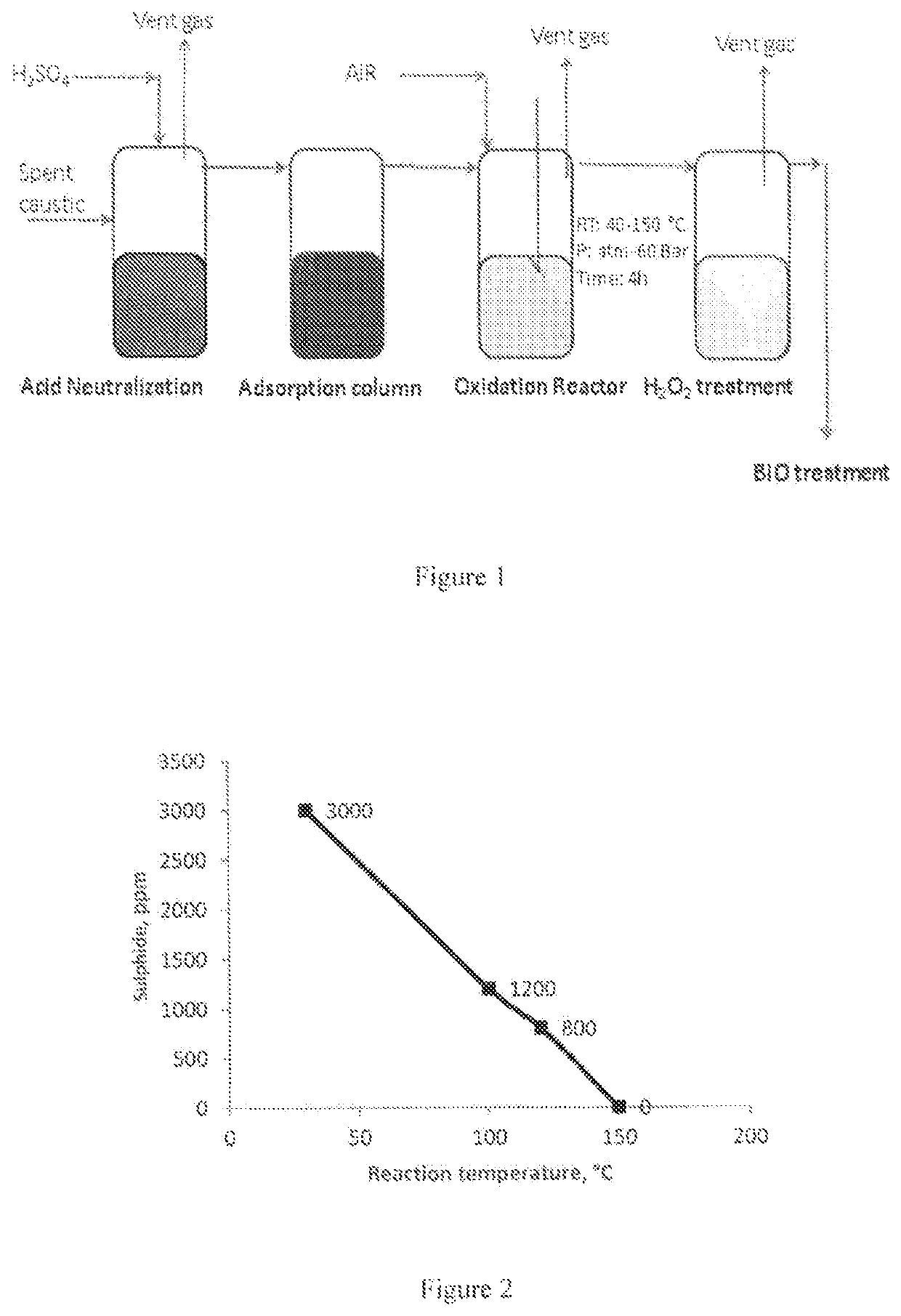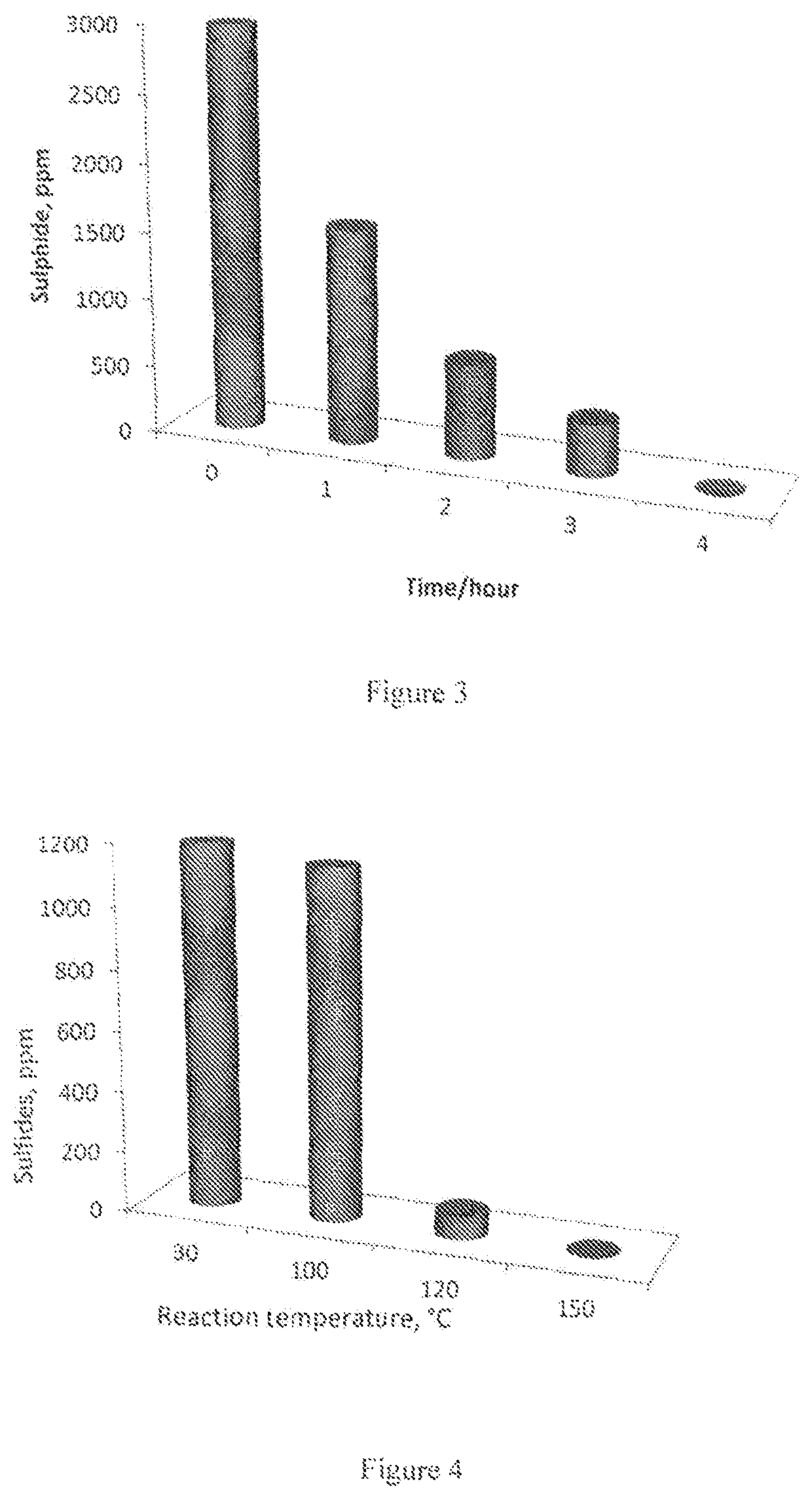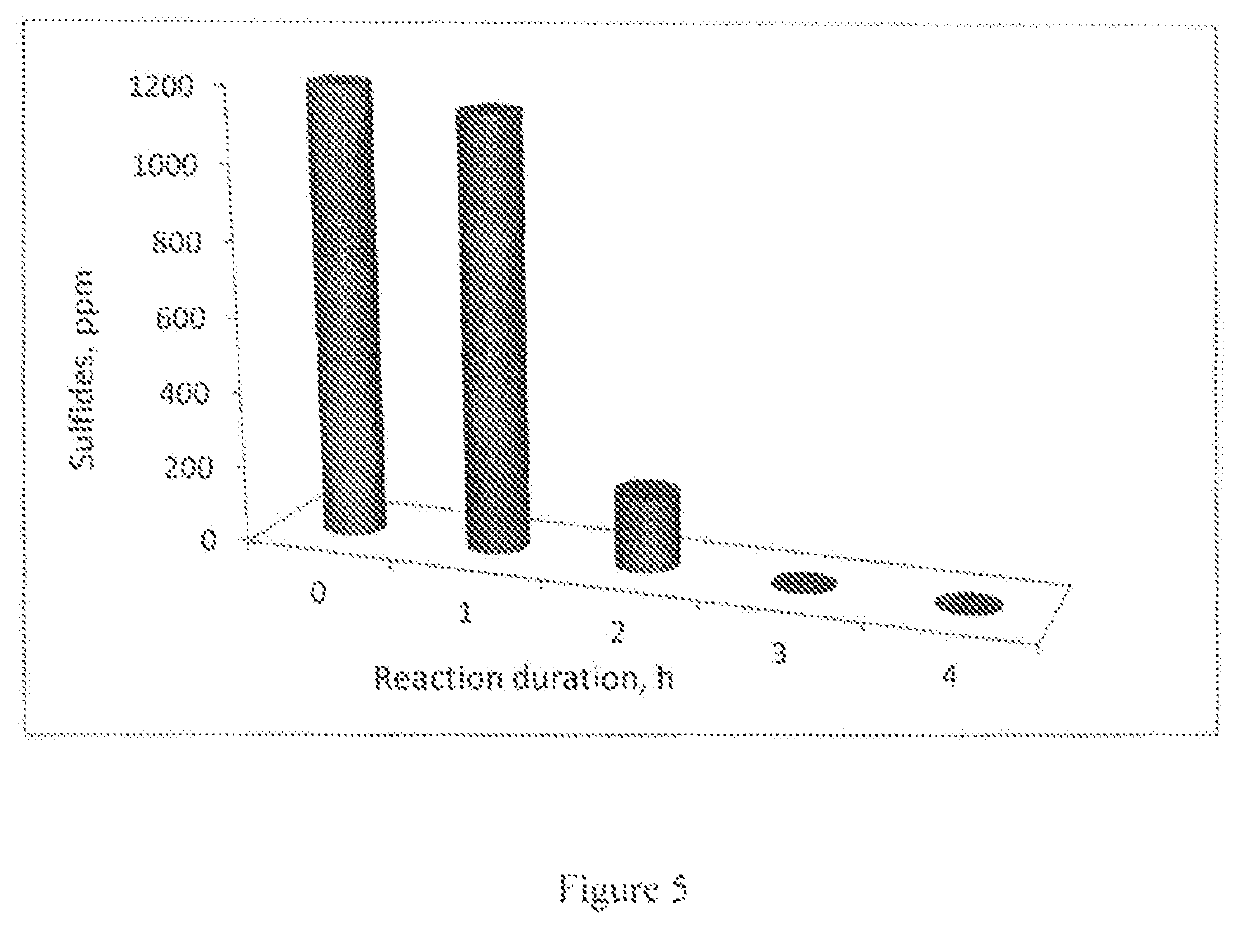Removal of sulfides in spent caustic stream over active solid phase catalysts
a mixed oxide catalyst and active solid phase technology, applied in the direction of metal/metal-oxide/metal-hydroxide catalysts, molecular sieve catalysts, metal/metal-oxide catalysts, etc., can solve the problems of loss of catalyst efficiency, and high cost of oxidants, so as to improve conversion, improve the effect of oxidation efficiency and reduce the cos
- Summary
- Abstract
- Description
- Claims
- Application Information
AI Technical Summary
Benefits of technology
Problems solved by technology
Method used
Image
Examples
example 1
[0052]The refinery spent caustic feed without any pretreatment with sulfidic content of 3140 ppm is used for the experiment to remove sulfides. The reaction conditions are as follows: spent caustic: 50 ml, Catalyst: Co—X zeolite and CoCaHAP, amount of catalyst: 50 mg, Oxidant: zero air, Temperature: 80° C. The results of various catalysts evaluated for removing sulfides has been presented in the Table 1. A maximum 58% conversion is achieved over Co—X zeolite using 50 mg catalyst at reaction temperature of 80° C. at atmospheric pressure.
[0053]
TABLE 1Reaction Amount of temperature,catalyst,% SCatalyst° C.mgremovalCo—X805058Co—X605023CoCaHAP502010CoCaHAP605025CoCaHAP805042Co—NaX805054Co—SrX805059
example 2
[0054]In order to study the effect of high temperature and pressure sulphides removal is conducted at 80 to 100° C. at 10 bar zero air pressure. The results are presented in the Table 2.
[0055]
TABLE 2SpentAirCausticCatalyst,TemperaturePressureSulfides(mL)Catalystmg(° C.)(bar)Conversion30Co—X50801061.2530Co—X501001076.2530Co—X501201092.530Co—X501201091.2530Co—X1001201068.75
example 3
[0056]The refinery spent caustic feed without any pretreatment with sulfidic content of 3140 ppm is used for the removal sulfides. The reaction conditions are as follows: spent caustic: 50 ml, amount of catalyst: 10-1000 mg, oxidant: zero air, Reaction temperature: 50-150° C., pressure atomspheric to 60 bars. The results of various catalysts evaluated for removing sulfides has been presented in the Table 3. A maximum 92% conversion is achieved over Co-CaHAP zeolite using 100 mg catalyst at reaction temperature of 150° C. at 60 bar pressure. The gas products were analyzed using the RGA and no significant amounts of H2S, SO2, and SO3 were observed.
[0057]
TABLE 3Spent SulphideCatalyst,caustic,Pressure,Temperature,ConversionCatalystsmgmlbar° C.%Co—X100256012066Co—X100253012043Co—X100251512037Co—CaHAp100256015094Co—CaHAp100253015066Co—CaHAp100251515057Cu—X100256015070Cu—X100253015057Cu—X100251515043—256015031—253015014—251512013
PUM
| Property | Measurement | Unit |
|---|---|---|
| temperature | aaaaa | aaaaa |
| wt % | aaaaa | aaaaa |
| temperatures | aaaaa | aaaaa |
Abstract
Description
Claims
Application Information
 Login to View More
Login to View More - R&D
- Intellectual Property
- Life Sciences
- Materials
- Tech Scout
- Unparalleled Data Quality
- Higher Quality Content
- 60% Fewer Hallucinations
Browse by: Latest US Patents, China's latest patents, Technical Efficacy Thesaurus, Application Domain, Technology Topic, Popular Technical Reports.
© 2025 PatSnap. All rights reserved.Legal|Privacy policy|Modern Slavery Act Transparency Statement|Sitemap|About US| Contact US: help@patsnap.com



